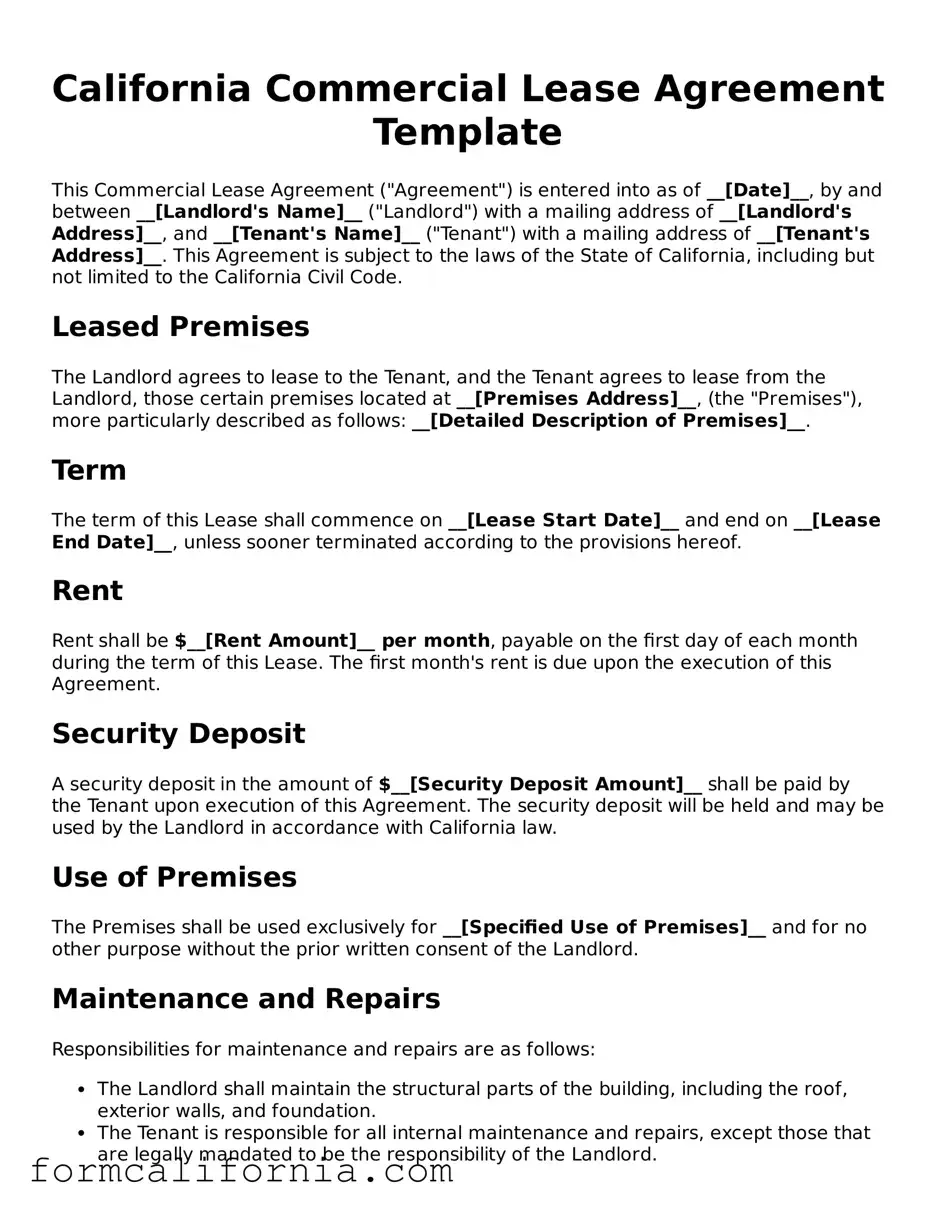California Commercial Lease Agreement Template
This Commercial Lease Agreement ("Agreement") is entered into as of __[Date]__, by and between __[Landlord's Name]__ ("Landlord") with a mailing address of __[Landlord's Address]__, and __[Tenant's Name]__ ("Tenant") with a mailing address of __[Tenant's Address]__. This Agreement is subject to the laws of the State of California, including but not limited to the California Civil Code.
Leased Premises
The Landlord agrees to lease to the Tenant, and the Tenant agrees to lease from the Landlord, those certain premises located at __[Premises Address]__, (the "Premises"), more particularly described as follows: __[Detailed Description of Premises]__.
Term
The term of this Lease shall commence on __[Lease Start Date]__ and end on __[Lease End Date]__, unless sooner terminated according to the provisions hereof.
Rent
Rent shall be $__[Rent Amount]__ per month, payable on the first day of each month during the term of this Lease. The first month's rent is due upon the execution of this Agreement.
Security Deposit
A security deposit in the amount of $__[Security Deposit Amount]__ shall be paid by the Tenant upon execution of this Agreement. The security deposit will be held and may be used by the Landlord in accordance with California law.
Use of Premises
The Premises shall be used exclusively for __[Specified Use of Premises]__ and for no other purpose without the prior written consent of the Landlord.
Maintenance and Repairs
Responsibilities for maintenance and repairs are as follows:
- The Landlord shall maintain the structural parts of the building, including the roof, exterior walls, and foundation.
- The Tenant is responsible for all internal maintenance and repairs, except those that are legally mandated to be the responsibility of the Landlord.
Modifications to the Premises
No alterations, additions, or improvements shall be made by the Tenant to the Premises without the prior written consent of the Landlord.
Insurance
The Tenant shall maintain at its own expense a comprehensive general liability insurance policy. The policy shall name the Landlord as an additional insured.
Compliance with Laws
The Tenant agrees to conduct business in the Premises in compliance with all applicable laws, ordinances, rules, and regulations of the State of California and any other relevant authorities.
Termination
This Lease may be terminated by either party with written notice given __[Notice Period]__ days in advance. In case of breach of any lease terms by either party, the other shall have the right to terminate the Lease immediately in accordance with California law.
Signature
IN WITNESS WHEREOF, the parties have executed this Lease as of the date first above written.
_______________________
Landlord's Signature
_______________________
Tenant's Signature
